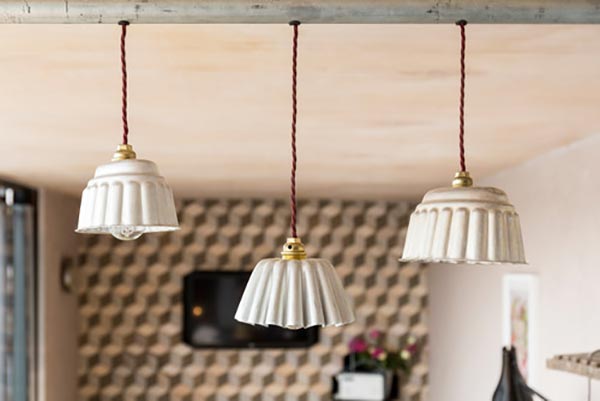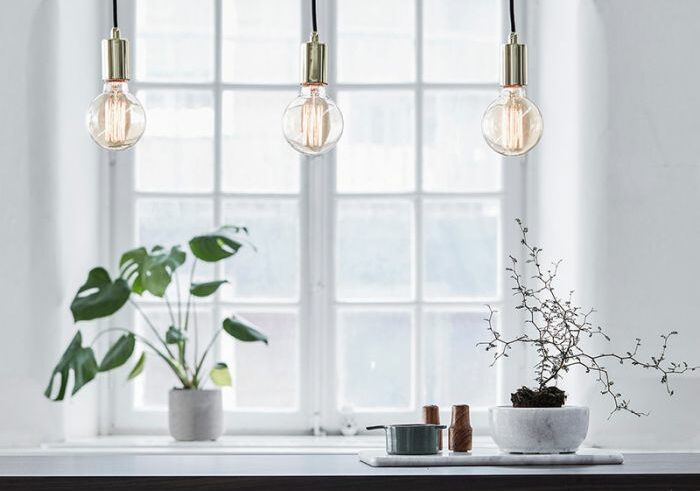Kitchen pendant light covers are an essential component of modern lighting design, contributing both to the functionality and aesthetic appeal of your space. While pendant lights themselves add focused illumination, their covers play a crucial role in shaping the ambiance, style, and even the light distribution in your kitchen. Whether you’re revamping an existing kitchen or building a new one, understanding the significance of light covers can help you create a more cohesive and well-lit environment.
When selecting pendant light covers, the first aspect to consider is the material. Materials like glass, metal, fabric, and plastic each offer unique advantages and contribute differently to the overall design. Glass light covers, for instance, are popular for their ability to diffuse light evenly, creating a soft, ambient glow. They’re versatile, coming in frosted, clear, or tinted variations that complement various kitchen styles. Metal covers, on the other hand, often deliver a bold and modern look, offering directed illumination that works well for task lighting. Fabric covers, though less common in kitchens due to their maintenance requirements, can add warmth and a touch of luxury to the space. Lastly, plastic covers are lightweight and budget-friendly, though they may lack the longevity of other materials.

The shape and size of your pendant light cover greatly influence the kitchen’s overall look. Common shapes include dome, cylinder, cone, globe, and drum, each suited to different design aesthetics. Dome-shaped covers, for example, are ideal for traditional or rustic kitchens, while sleek cylindrical or conical designs fit perfectly in contemporary or industrial-themed spaces. The size of the light cover should be proportional to the scale of your kitchen and the surface it’s illuminating. Oversized light covers can make a bold statement but might overwhelm smaller spaces. Conversely, compact covers may not provide sufficient visual impact or light distribution in larger kitchens.
Color and finish are equally important in choosing pendant light covers. Neutral tones like white, black, and gray are timeless and versatile, blending seamlessly with various kitchen palettes. For those seeking a pop of color, bold hues like red, blue, or green can serve as eye-catching focal points. Metallic finishes such as brass, copper, or chrome add a touch of sophistication and are especially trendy in modern kitchen designs. Matte finishes create a subdued and elegant effect, while glossy ones reflect more light and add a sense of vibrancy to the space. Whatever your preference, the color and finish of the light cover should align with your kitchen’s existing decor.

Pendant light covers also play a key role in light distribution. Covers that are opaque or have a metallic finish direct light downward, making them ideal for illuminating specific areas like kitchen islands or countertops. In contrast, translucent or transparent covers disperse light more evenly, creating a softer glow that brightens the surrounding space. Frosted or etched glass covers diffuse light, reducing glare and creating a cozy ambiance. Understanding how light covers affect illumination helps you choose the right type for your kitchen’s needs, whether it’s task lighting, ambient lighting, or accent lighting.
Placement and arrangement of pendant lights significantly impact the effectiveness of their covers. Over a kitchen island or dining table, a series of evenly spaced pendants with matching covers can create a cohesive and balanced look. Alternatively, a single statement pendant with a unique or oversized cover can serve as a focal point in the kitchen. The height at which the lights are hung also matters; generally, pendant lights should be placed 30-36 inches above the countertop to provide adequate lighting without obstructing the view. Proper spacing and alignment ensure the light covers enhance both functionality and aesthetics.

Durability and maintenance are practical considerations when choosing pendant light covers, especially in a kitchen setting where they may be exposed to heat, grease, and humidity. Glass covers are relatively easy to clean but may require regular wiping to prevent smudges. Metal covers are durable and resistant to wear but might develop patina over time, depending on the finish. Fabric covers demand more care, as they can trap dust and stains, making them less suitable for high-traffic kitchens. Plastic covers, while low-maintenance, can discolor or warp when exposed to excessive heat. Understanding the care requirements of each material ensures your light covers remain in excellent condition.
Customizing pendant light covers is an option that allows homeowners to infuse their personality into the kitchen design. Some prefer hand-painted glass covers for a touch of artistry, while others opt for laser-cut metal designs that cast intricate shadows. Swapping out standard light covers with unique shapes, patterns, or textures is an easy and cost-effective way to refresh the look of your kitchen. Customization also offers the opportunity to match light covers with other kitchen elements, such as cabinetry hardware, faucets, or backsplashes, creating a more cohesive design.
Energy efficiency is another factor to consider when selecting pendant light covers. The type of light bulb you use—LED, incandescent, or fluorescent—affects the appearance and functionality of the cover. LED bulbs are the most energy-efficient and versatile, working well with most types of light covers. Incandescent bulbs emit warm light but generate more heat, which may affect certain materials like plastic or fabric. Fluorescent bulbs are energy-saving but may not provide the same aesthetic warmth as LEDs. Pairing the right bulb with the appropriate cover ensures optimal performance and energy savings.

Pendant light covers can also influence the perception of space in your kitchen. Light covers with reflective or translucent surfaces can make a smaller kitchen feel more open and airy by bouncing light around the room. Darker or opaque covers, while striking in design, might absorb light and make the space feel cozier but potentially smaller. For kitchens with limited natural light, opting for covers that maximize light output can make a significant difference in creating a bright and inviting environment.
Another trend in pendant light covers is the use of eco-friendly materials and designs. Recycled glass, sustainable wood, or bamboo light covers are great choices for environmentally conscious homeowners. These materials not only reduce environmental impact but also add unique textures and character to the kitchen. Many manufacturers now offer a range of eco-friendly options, proving that sustainability and style can go hand in hand.
Cost is an important consideration when selecting pendant light covers. While high-end materials like hand-blown glass or custom metalwork can be pricey, there are plenty of affordable options that don’t compromise on style or quality. Setting a budget beforehand helps narrow down choices and ensures you find a solution that meets your needs without overspending. Keep in mind that investing in durable, high-quality covers can save money in the long run by reducing the need for replacements or repairs.

Pendant light covers can also serve as conversation starters or art pieces in your kitchen. Unique designs, such as geometric shapes, stained glass patterns, or vintage-inspired fixtures, can become focal points that draw attention and add personality to the space. Whether you prefer a minimalist aesthetic or an eclectic mix of styles, there’s a light cover design that reflects your taste and enhances your kitchen’s overall character.
The installation process is an opportunity to ensure your pendant light covers are positioned for maximum impact. If you’re replacing existing covers, make sure the new ones are compatible with the pendant fixtures. For new installations, consider enlisting a professional electrician to ensure the lights are securely mounted and safely wired. Proper installation not only enhances the look of your pendant lights but also ensures their longevity and safe operation.
Finally, the versatility of pendant light covers makes them a valuable tool in kitchen design. Whether you’re aiming for a sleek, modern vibe or a warm, rustic atmosphere, the right light cover can help you achieve your vision. By combining functionality, durability, and aesthetic appeal, pendant light covers are more than just accessories—they’re integral to creating a well-designed and inviting kitchen space.

Common Mistakes to Avoid
Choosing the Wrong Material: Selecting covers unsuitable for a kitchen environment, like untreated fabric, can lead to stains or wear over time. Opt for durable and easy-to-clean materials like glass or metal.
Ignoring Scale and Proportion: Oversized or undersized light covers can throw off the balance of your kitchen design. Ensure the size of the cover complements the scale of your pendant lights and kitchen layout.
Poor Placement and Height: Hanging lights too high or too low can affect both functionality and aesthetics. Always measure carefully to achieve the ideal height and spacing for your pendant lights.
Overlooking Maintenance Needs: Some materials require more upkeep than others. Failing to clean or maintain your light covers can result in a dull, unappealing appearance over time.
Clashing Styles: Choosing light covers that don’t align with your kitchen’s design theme can create a disjointed look. Always consider how the covers complement other elements in the room.
Skipping Quality Checks: Opting for low-quality materials to save money might lead to discoloration, warping, or breakage. Investing in durable covers ensures longevity and better value.

What materials are best for kitchen pendant light covers?
The best materials depend on your needs and kitchen style. Glass is elegant and diffuses light well, metal offers durability and modern appeal, and plastic is lightweight and budget-friendly. Each material has its pros and cons, so choose based on durability, maintenance, and design preference.
How do I choose the right size for pendant light covers?
Size depends on the scale of your kitchen and the purpose of the lighting. Larger covers work well in spacious kitchens or over expansive islands, while smaller covers suit compact spaces. Ensure the size is proportional to the pendant fixture and complements the kitchen’s layout.
Can I install pendant light covers myself?
Yes, if you’re comfortable with basic DIY tasks, you can replace or install light covers. However, for new installations or complex setups, hiring a professional electrician ensures safe and secure mounting.

How do pendant light covers affect light distribution?
Opaque covers focus light downward, ideal for task lighting, while translucent or frosted covers diffuse light evenly, creating ambient illumination. Clear covers allow the most light to pass through, brightening larger areas.
Are custom light covers worth the investment?
Custom covers add a unique touch to your kitchen and allow for personalization. While they may cost more than standard designs, they can enhance the kitchen’s aesthetic and serve as a focal point, making them worth considering.
How often should I clean my pendant light covers?
Cleaning frequency depends on the material and kitchen usage. Glass and metal covers may need monthly wiping to prevent smudges or grease buildup, while plastic covers require gentler, less frequent cleaning. Regular maintenance keeps them looking their best.

Kitchen Pendant Lighting Tips – Lighting Direct

Modern Glass Pendant Light Hand Blown Colorful Bell Shaded with 1 Light Dining Room Living Room

light fixtures and ceiling fans images on Pinterest Light fixtures, Lamps and

Related Posts:
- Kitchen Lighting Rules
- Track Lighting Above Kitchen Sink
- Kitchen Breakfast Nook Lighting
- French Provincial Lighting Kitchen
- Kitchen Backsplash Ideas For Light Maple Cabinets
- Kitchen Ceiling Fan And Light
- Kitchen Light Replacement
- Country Style Kitchen Pendant Lights
- Replace Ballast Kitchen Light
- Kitchen Lighting Solutions